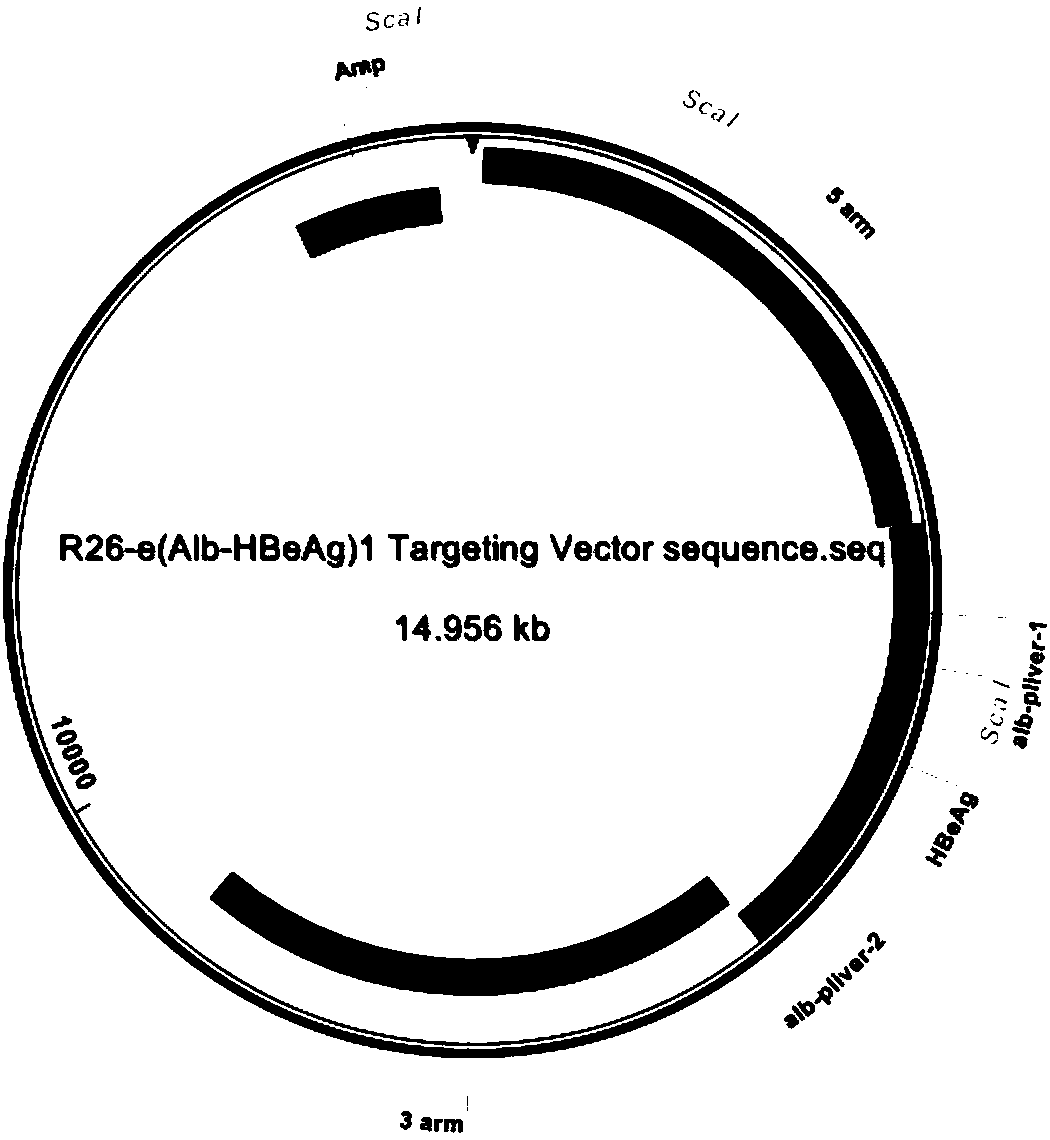Construction method and application of HBeAg transgenic mouse model
A technology of transgenic mice and construction methods, applied in the field of biomedicine, can solve problems such as constraints, low construction efficiency, and failure to achieve liver-specific expression of HBeAg
- Summary
- Abstract
- Description
- Claims
- Application Information
AI Technical Summary
Problems solved by technology
Method used
Image
Examples
Embodiment Construction
[0040] The present invention will be further described in detail below in conjunction with specific embodiments, which are explanations of the present invention rather than limitations.
[0041] The present invention is achieved through the following technical solutions:
[0042] 1. Construction of recombinant R26-e(Alb-HBeAg)1 targeting vector:
[0043] (1) First use conventional methods to clone the HBeAg gene of HBV to obtain the HBeAg gene, and then use CRISPR / Cas9 technology (Mali P, et al.2013; Cong L, et al.2013; Wang H, et al.2013; Shen B, etal.2013.), the HBeAg gene was inserted into the corresponding expression frame at the Rosa26 gene locus by means of homologous recombination, such as figure 1 shown.
[0044] 1) Overexpression target gene name: HBeAg
[0045] 2) Insertion site gene name (Ensembl): Gt(ROSA)26Sor (ENSMUSG00000086429), abbreviation: Rosa26.
[0046] 3) Ensembl website link of the target gene at the insertion site:
[0047] http: / / asia.ensembl.org...
PUM
 Login to View More
Login to View More Abstract
Description
Claims
Application Information
 Login to View More
Login to View More - R&D
- Intellectual Property
- Life Sciences
- Materials
- Tech Scout
- Unparalleled Data Quality
- Higher Quality Content
- 60% Fewer Hallucinations
Browse by: Latest US Patents, China's latest patents, Technical Efficacy Thesaurus, Application Domain, Technology Topic, Popular Technical Reports.
© 2025 PatSnap. All rights reserved.Legal|Privacy policy|Modern Slavery Act Transparency Statement|Sitemap|About US| Contact US: help@patsnap.com



